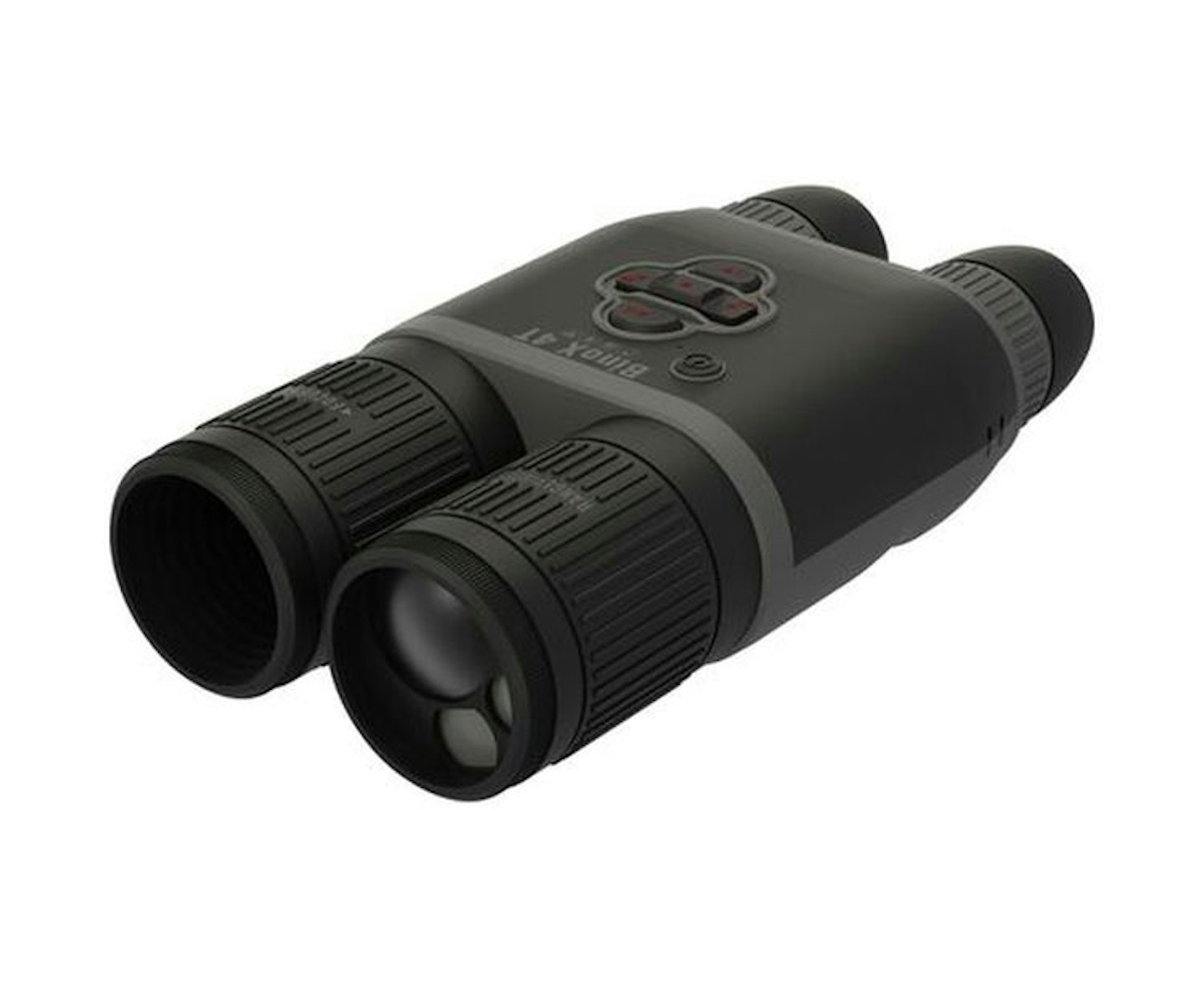There isn’t an outdoorsman alive that would disagree with the fact that a pair of optics is invaluable whether you are out hunting, hiking, or bird watching.
However, to get the full potential and value from your optics it is important to choose the correct type and that could mean opting to use monoculars over binoculars. We are going to break down the differences between binoculars vs monoculars and discuss a few factors that need to be considered when making a decision.
Monoculars
An Overview
For some strange reason, the word Monocular still conjures up images of a 19th-century ship Captain whipping out his golden monocular and extending it to see the horde of pirates heading their way. Well, it’s time to change that image, and ATN’s range of monoculars will paint an entirely different picture in your head and have you question the binocular vs monocular.
The Principle
There is no doubt that binoculars are more popular amongst outdoorsmen than monoculars, but there is certainly a place for them and with good reasons to back it up.
In essence, the monocular is a compact type of telescope that allows the user to observe distant objects with one hand. The compact design reduces the volume and weight making it a sought-after component for those with minimal space.
While monoculars of past decades have been notoriously weak in magnification and clarity, recent technological advancements have seen them improve drastically and their popularity is on the rise. We will compare a few monoculars by ATN that may be able to provide some info on monocular vision vs binocular vision.
One question that often arises and needs to be answered is, where does a monocular end and a telescope begin? The general rule of thumb is that a telescope is >20x magnification with an objective lens of 60mm to 90mm and requires additional support such as a tripod for correct use.

Technical Parameters
Magnification Range: 4x - 10x power
Objective Lens Diameter: 20mm to 42mm
Common Sizes: 7x25, 8x20, 8x30, 8x42, 10x42
Prism Type: Porro or Roof
Field of View:
-
8x equals 140m @ 1000m
-
10x equals 110m @ 1000m
-
12x equals 100m @ 1000m
Focusing Mechanism: Body Ring
Improved Features
As mentioned earlier, the monocular has come a long way in its development with the addition of new features such as:
-
Video recording capabilities
-
WiFi and Bluetooth connectivity
-
Thermal detection
-
Black Hot/White Mode
-
Ergonomic designs
-
Hi-Res display
-
Improved eye relief
-
Mountings for helmet or bipod
-
Enhanced battery life
-
Rangefinder capabilities
With all these added features there can be no better examples of just how far the monocular has come and what a powerful tool it can be than the ODIN LT 320 4-8x and the OTS-XLT 160 2.4-10x by ATN.
ATN ODIN LT 320 4-8X
Redefining the boundaries that have confined the monocular since its creation, comes the ODIN LT 320 4-8x by ATN. Simplicity, efficiency, and versatility are all characteristics of the ODIN LT 320 that are neatly packaged into this compact thermal monocular and then expertly finished with the latest technological features that will have every telescope and binocular manufacturer looking over their shoulder.
Features
-
ATN Obsidian Core LT
-
4-8x Magnification power
-
Thermal detection up to 1,510 yards
-
Black Hot / White Mode options
-
Ergonomic design
-
Hi-Res Display 1280x960
-
Head / Helmet mount
-
Up to 5 hours runtime on rechargeable battery
-
Weather resistant (operating temperature -20℉ to +120℉)
Technical Specifications
-
Lens: 35mm
-
Resolution: 320x240, 60 fps, 12μm
-
Eye Relief: 25mm
-
Battery Type: 1 x CR123A (Li-ion)
-
Dimensions: 5.71”x2.8”x2.01”
-
Weight: 342g
-
Warranty: 3 years
ATN OTS-XLT 160 2.5-10X
The OTS-XLT 160 2.5-10X comes in at a lower price tag than its bigger brother the ODIN LT 320 but the affordable price doesn’t mean ATN have lowered the standards and exceptional features that one would expect from their optics.
One could state that the OTS-XLT is simply redesigned and streamlined to suit the needs of the everyday outdoorsman.
Features
-
ATN Obsidian Core LT
-
2.5-10x Magnification power
-
Thermal detection up to 850 yards
-
Black Hot / White Hot / Red Hot Mode options
-
Compact and ergonomic design
-
Micro-Display 720x540 px
-
Video recording at 50fps
-
Smart rangefinder
-
Ultra-low power consumption with up to 10 hours of battery life
-
Weather resistant (operating temperature -4℉ to +131℉)
Technical Specifications
-
Lens: 25mm
-
Sensor: 160x120 px / 12μm 50 Hz
-
Field of view, degrees: 6.5x4.9
-
Video Resolution: 720x576 px
-
Internal Storage: 8 GB
-
Dimensions: 6.85”x2.63”x2.08”
-
Weight: 370g
-
Warranty: 2 years
Who Needs a Monocular?
A monocular with the quality features of the ODIN LT and OTS-XLT would be ideal for the following persons and may help to persuade those outdoor enthusiasts that are looking for answers to questions such as “the best monocular vs binocular for hunting?”:
-
Varmint hunters focusing on hogs and coyotes
-
Bow hunters while carrying their bow
-
Tactical shooters and law enforcement officers making use of the head/helmet mount
-
Security personnel performing nighttime patrols
Binoculars
An Overview
The world of binoculars is a fascinating place with an almost endless supply of manufacturers, models, shapes, sizes, capabilities, and features that can satisfy the needs of anyone. Hence it can make choosing the right pair a little overwhelming, but the easiest way to choose a pair is by understanding the basic principles of binoculars and what features match the type of activity you will be taking part in.
The Principle
The most basic principle of binoculars is magnification. The ability to see objects clearly that are at a distance where the user's eyes are unable to focus.
Binoculars are in essence two refracting telescopes mounted side-by-side, providing the user with a three-dimensional image through a parallax that gives the visual cortex the impression of depth.
Binoculars are in most cases categorized by specific parameters that provide an immediate indication of the binocular's capabilities. The two parameters are magnification and objective diameter, this can be expressed in the following way, 7x35, 10x40, 8x32, and so on. Looking at the first description, 7x35, means these particular binoculars have a 7x magnification with an objective diameter of 35mm.

Technical Parameters
Magnification Range: 4x - 25x power
Objective Lens Diameter: 22mm to 70mm
Common Sizes: 7x35, 8x25, 8x40, 10x42, 10x50,
Prism Type: Porro, Schmidt-Pechan Roof Prism, Abbe-Koenig Roof Prism
Field of View:
-
8x equals 565m @ 1000m
-
10x equals 300m @ 1000m
-
12x equals 260m @ 1000m
Focusing Mechanism: Center focus or Individual focus
Improved Features
Binoculars have quickly become the complete package when it comes to optics and it seems there is no end to what manufacturers can expertly pile into these compact devices.
-
Image Stabilization
-
Nitrogen Purging
-
Zoom In and Out Function
-
Built-In Rangefinder
-
Onboard Environmental Sensors
-
Video Recording
-
WiFi / Bluetooth Connectivity
-
Ballistic Information Exchange
-
Night Vision
-
Thermal Imagery
-
Waterproof and Fog Resistant
ATN BINOX 4K 4-16X
You hear the term “all-in-one” getting thrown around quite a lot these days and often these all-in-one packages tend to come up short. Well, it seems ATN got it all figured out and is answering the call of the outdoorsman looking for the complete all-in-one pair of binoculars.
ATN’s BINOX 4K 4-16X binoculars have the ideal features to match any scenario, they are put together in such a way that makes using them seamless and straightforward.
Features
-
Ultra HD sensor with ultra HD optics
-
Day and night vision mode
-
Built-in laser rangefinder 1,000 y/m
-
IR illuminator
-
4 - 16x magnification
-
ATN Radar
-
Ballistic information exchange technology
-
4K recording at 120 fps
-
Dual stream video capabilities
-
Ultra-low power consumption
-
Interpupillary Adjustment
-
3D Gyroscope
-
3D Magnetometer
Technical Specifications
-
Magnification: 4-16x
-
Angle of view: 6°
-
Field of view: 220ft @ 1,000 yards
-
Objective lens: 40mm
-
Display resolution: 1280x720x2
-
Eye relief: 10-30mm
-
Video record resolution: 1080p @ 30/60/120
-
Charging: USB Type C
-
Dimensions: 9.4” x 5” x 2.6”
-
Weight: 2.5 lbs
-
Warranty: 2 years
ATN BINOX 4T 640 2.5-25X
We mentioned earlier the importance of selecting a pair of binoculars that match the scenario and in some cases, the users just need to see further day or night with the most advanced thermal imagery sensors.
Make no mistakes, the BINOX 4T 640 2.5-25X binoculars are designed for the serious outdoorsman who wants to know every detail of their surroundings, day and night.
Features
-
Smart HD thermal binoculars
-
Dual Core thermal sensor
-
Thermal detection range up to 1,950 yards
-
Built-in laser rangefinder 1,000 y/m
-
Black Hot/White Hot and Color modes
-
IR illuminator
-
2.5 - 25x magnification
-
ATN Radar
-
Ballistic information exchange technology
-
Dual stream video capabilities
-
Ultra-low power consumption
-
Interpupillary Adjustment
-
3D Gyroscope
-
3D Magnetometer
Technical Specifications
-
Magnification: 2.5-25x
-
Field of view: 12.5°x9.7°
-
Display resolution: 1280x720x2
-
Eye relief: 10-30mm
-
Video record resolution: 1280x960 @ 60 fps
-
WiFi: iOS and Android
-
Dimensions: 9.4” x 5” x 2.6”
-
Weight: 2.5 lbs
-
Warranty: 3 years

Binoculars vs Monoculars
While modern binoculars and monoculars could easily be adapted to suit any outdoor activity, there are some instances when one device may be preferred over the other.
For Hunting
Binoculars are and will continue to be the more popular of the two when it comes to hunters, but there is a place for monoculars, especially with bow hunters.
Yes, binoculars will give the user a wider angle of view when scanning and the stability of using both hands. However, the situation may be a little different for a bow hunter who has a bow in hand trying to close the distance on an animal. The ability to use one hand while getting a better picture of the animal and finding out the distance will appeal to a bow hunter.
For Bird Watching
With birding, it is all about covering as much area as possible and then focusing on a single spot once you locate your targeted species. To truly identify a bird, you need to be stable and for that binoculars are best.
Night Vision/Tactical
Night vision and tactical application are where the monocular shines and comes into its own. The ability to have a monocular mounted to a helmet or head strap makes it the go-to choice for tactical personnel and law enforcement.
Night vision and thermal hunters prefer the use of a monocular because scanning across great areas is not necessary but at the same time the hunter is carrying their firearm with a mounted tripod and having a spare hand to hold the monocular is very practical.
Outdoor Activities
Campers and hikers would find greater use of binoculars than a monocular. Observing larger tracts of land and appreciating the full beauty of an area can be lost with a monocular.
Yet when it comes to sports such as golf, monoculars are useful because not only is the need for high magnification not necessary but the general compact size of the monocular makes it easy to store and use when needed.
Conclusion
One way of looking at the difference between binoculars vs monoculars or rather how to choose the right device is with the generalization of If you need to look far and wide, go with binoculars, if it's close and you want details, go with monoculars.
Of course, there are other factors such as added features and dimensions, but with today’s modern technology it seems just about any optical device can truly do it all.
